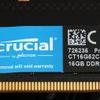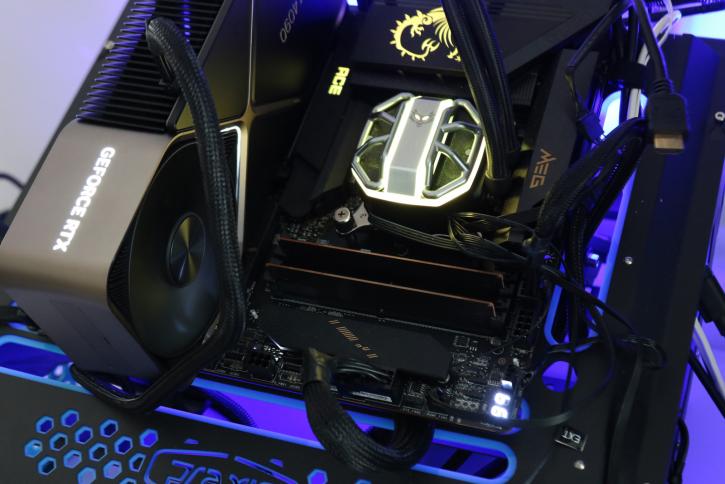Introduction
Crucial 32GB DDR5 - 5200 MHz CL42 review
Crucial 32GB 5200 MHz CL42 DDR5 is a type of computer memory that is offered as a value kit. You'll spot them for 125~150 USD/EUR, and that's for 32GB of it. The 32GB Desktop DDR5 5200 MHz UDIMM Memory Kit consists of two 16GB memory modules that operate at a frequency of 5200 MHz. These unbuffered 288-pin DDR5 UDIMM memory modules are designed to enhance the overall performance of your system, the Crucial 32GB Desktop DDR5 5200 MHz UDIMM Memory Kit features 42-42-42 memory timings.
This specific memory has a capacity of 32 gigabytes, which means it can store a large amount of data. The frequency of 5200 MHz refers to the speed at which the memory can transfer data to the processor. A higher frequency means faster performance. The CL42 latency refers to the number of clock cycles that elapse between the moment a memory controller sends a request to access data and the moment the data becomes available. Lower latency is better. DDR5 memory is the latest generation of DDR memory technology, and offers improved performance and efficiency compared to previous generations. It has a higher memory bandwidth and increased reliability, making it suitable for use in demanding applications, such as high-end gaming and content creation.
Some advantages of DDR5:
- Increased Bandwidth: DDR5 offers increased bandwidth of up to 6400 MT/s (JEDEC), which is a significant improvement compared to DDR4. This means data can be transferred more quickly and efficiently.
- Improved Power Efficiency: DDR5 uses less power than DDR4, which results in reduced power consumption and increased efficiency. This translates to longer battery life for laptops and lower power bills for desktop computers.
- Higher Density: DDR5 allows for higher memory density, which means more memory can be packed into the same amount of physical space. This is particularly important for applications where memory space is limited, such as laptops, smartphones, and embedded systems.
- Error Correction: DDR5 includes improved error correction features, which helps to reduce the number of errors that occur during data transmission. This results in more reliable and accurate data transfer, and reduces the risk of data loss or corruption.
- Enhanced Reliability: DDR5 includes additional features that improve the reliability of memory modules, such as improved refresh algorithms and enhanced ECC (error correction code) support. This results in more reliable memory modules and reduces the risk of memory failures or crashes.
Even though DDR5 has many advantages, the new memory standard got off to a shaky start. DDR5's introduction coincided with a worldwide semiconductor scarcity, which increased prices and slowed its uptake. DDR5 comes with new features like a Power Management Integrated Circuit, often known as a PMIC, which controls voltage changes. This effectively allows the DDR5 module to take over energy management and lessen the demand placed on the motherboard controller. Compared to DDR4, the nominal DDR5 voltage is 1.1 V, but the normal DDR4 voltage is 1.2 V., And while DDR4 is typically 1.35V XMP, it can be as high as 1.45V in some instances.
Regarding the XMP voltage, DDR5 is mostly using 1.25V. Talking XMP, DDR5 also introduced XMP 3.0, an update to the previous version. Raising the number of profiles from 3 to 5 makes it possible to fine-tune the system. Depending on the configuration, this could imply three profiles for manufacturer settings and even two placeholders for users to save their profiles.
The kit today currently sits at 150 EUR, that is 4.7 EUR per GB. Our setup will be based on the sweet spot configurations; DDR5 4800, 6000 MHz, 7200 CL34 kit and thus the tested 5200 MHz CL52 kit from Crucial (2x 16GB). Crucial's 32GB Desktop DDR5 5200 MHz UDIMM Memory Kit comes with a five-year warranty,


